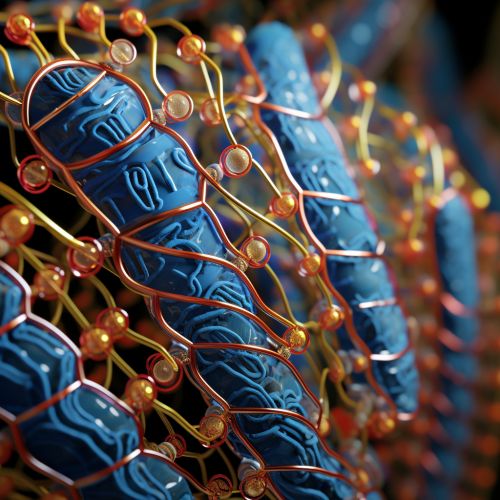Electron Transport Chain
Overview
The electron transport chain (ETC) is a series of protein complexes and small organic molecules embedded in the inner mitochondrial membrane that plays a vital role in cellular respiration. It is the final and most critical step of the metabolic pathway, where the energy stored in nutrients is converted into ATP, the main energy currency of the cell.
Structure and Components
The ETC is composed of four protein complexes (Complex I, II, III, and IV) and two mobile electron carriers. These complexes are embedded in the inner mitochondrial membrane, and their arrangement allows for the efficient transfer of electrons and the pumping of protons across the membrane.


Complex I
Complex I, also known as NADH:ubiquinone oxidoreductase, is the first and largest complex in the ETC. It accepts electrons from NADH, a product of the citric acid cycle, and transfers them to ubiquinone (CoQ), one of the mobile electron carriers.
Complex II
Complex II, or succinate:ubiquinone oxidoreductase, is the only complex that does not span the entire membrane. It accepts electrons from FADH2, another product of the citric acid cycle, and also transfers them to CoQ.
Complex III
Complex III, or ubiquinol:cytochrome c oxidoreductase, accepts electrons from reduced CoQ and transfers them to cytochrome c, the second mobile electron carrier. This complex also pumps protons across the membrane, contributing to the proton gradient.
Complex IV
Complex IV, or cytochrome c oxidase, is the final complex in the ETC. It accepts electrons from cytochrome c and transfers them to oxygen, the final electron acceptor, producing water as a byproduct. This complex also pumps protons across the membrane.
Function and Mechanism
The primary function of the ETC is to generate a proton gradient across the inner mitochondrial membrane. This is achieved through the transfer of electrons from NADH and FADH2 to oxygen, a process known as oxidative phosphorylation.
As electrons move through the complexes, protons are pumped from the mitochondrial matrix to the intermembrane space. This creates a proton gradient, or proton-motive force, which drives the synthesis of ATP by ATP synthase, a process known as chemiosmosis.
Role in Cellular Respiration
The ETC is the final stage of cellular respiration, following glycolysis and the citric acid cycle. It is where the majority of the ATP is produced, making it crucial for energy production in the cell.
Clinical Significance
Defects in the ETC can lead to a variety of mitochondrial diseases, as the ETC is critical for ATP production and overall cellular function. These diseases can affect multiple organ systems and are often severe.
